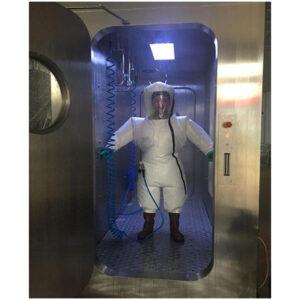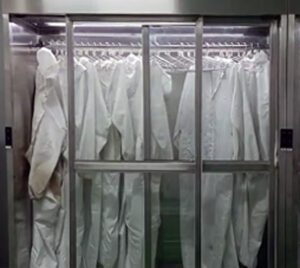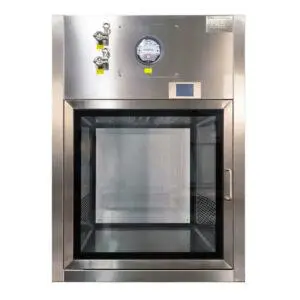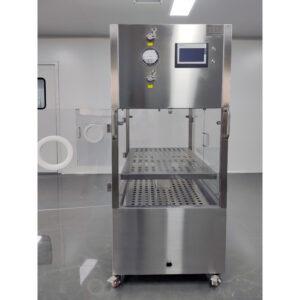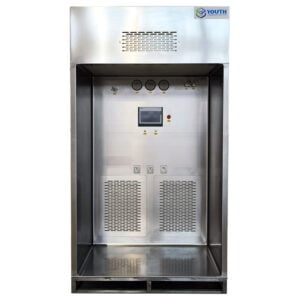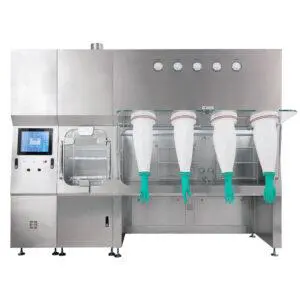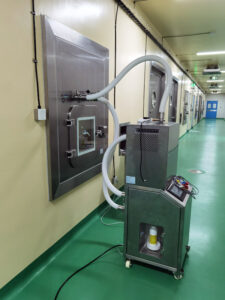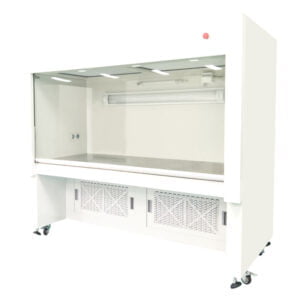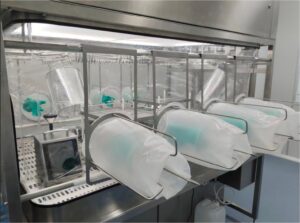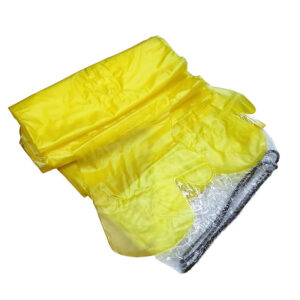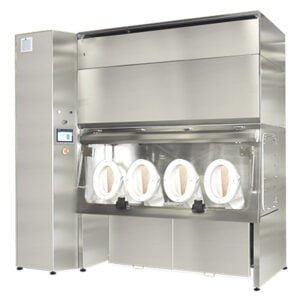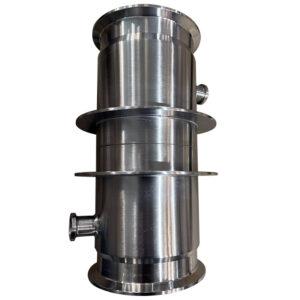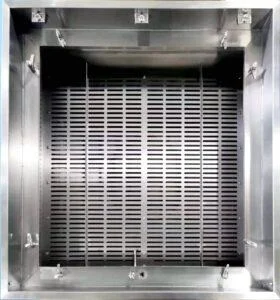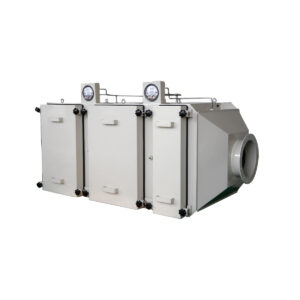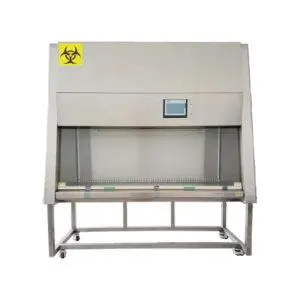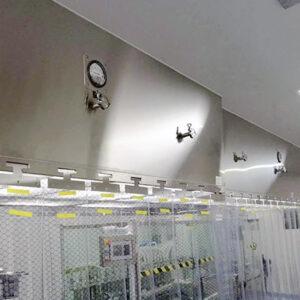Ensuring the sterility of pharmaceutical products is paramount in the industry, and one crucial aspect of this process is maintaining the integrity of gloves used in sterility test isolators. Glove integrity testing has become an indispensable practice, safeguarding both product quality and operator safety. As the pharmaceutical landscape evolves, so do the methods and technologies employed in this critical process.
In this comprehensive guide, we'll delve into the intricacies of glove integrity testing for sterility test isolators. We'll explore the various testing methods, the latest technological advancements, and the regulatory standards that govern this essential practice. From pressure decay tests to innovative wireless systems, we'll cover everything you need to know to ensure your isolator gloves meet the highest standards of safety and reliability.
As we navigate through this topic, we'll uncover the challenges faced by pharmaceutical manufacturers and the solutions that have emerged to address them. We'll examine how glove integrity testing fits into the broader context of contamination control and discuss its role in maintaining the sterile environment crucial for drug production and testing.
Glove integrity testing is a critical process in pharmaceutical manufacturing, ensuring the maintenance of sterile conditions and preventing contamination risks in isolators used for sterility testing.
What is Glove Integrity Testing and Why is it Essential?
Glove integrity testing is a crucial process in pharmaceutical manufacturing that ensures the gloves used in sterility test isolators are free from defects that could compromise the sterile environment. This testing is essential because even the smallest breach in a glove can lead to contamination, potentially jeopardizing product safety and quality.
The primary purpose of glove integrity testing is to detect any holes, tears, or weak spots in the gloves that may not be visible to the naked eye. These tests are typically performed regularly as part of a comprehensive contamination control strategy.
Glove integrity testing plays a vital role in maintaining the sterility of isolators, which are critical components in pharmaceutical production and testing processes. By ensuring that gloves remain intact and impermeable, manufacturers can prevent microbial ingress and maintain the aseptic conditions necessary for sterility testing and production of sterile products.
According to industry standards, glove integrity testing should be performed at regular intervals, typically before each use or at least weekly, to ensure consistent protection against contamination.
| Aspect | Importance |
|---|---|
| Frequency | Weekly or before each use |
| Detection Limit | As small as a few micrometers |
| Compliance | ISO 14644-7 standards |
| Impact | Prevents microbial contamination |
Implementing a robust glove integrity testing program is not just a best practice; it's a regulatory requirement in many jurisdictions. By investing in reliable testing methods and technologies, pharmaceutical companies can safeguard their products, protect their operators, and maintain compliance with stringent industry standards.
How Does Pressure Decay Testing Work in Glove Integrity Assessment?
Pressure decay testing has emerged as one of the most reliable and widely used methods for assessing glove integrity in sterility test isolators. This method is based on the principle that a pressurized system will lose pressure over time if there are any leaks present.
In a typical pressure decay test, the glove is inflated to a specific pressure and then isolated from the pressure source. The pressure inside the glove is then monitored over a set period. If there is a significant drop in pressure, it indicates the presence of a leak.
The pressure decay method is highly sensitive and can detect extremely small leaks, making it ideal for the stringent requirements of pharmaceutical manufacturing environments. It offers several advantages over other testing methods, including its non-destructive nature and the ability to provide quantitative results.
Pressure decay testing can detect leaks as small as a few micrometers, providing a level of sensitivity that is crucial for maintaining the sterility of isolator environments.
| Test Parameter | Typical Value |
|---|---|
| Initial Pressure | 1000 Pa |
| Test Duration | 15-30 minutes |
| Acceptable Pressure Loss | <10% of initial pressure |
| Sensitivity | Leaks down to 3-5 µm |
The YOUTH glove integrity testing systems employ advanced pressure decay technology, ensuring that pharmaceutical manufacturers can maintain the highest standards of sterility in their isolators. These systems are designed to provide accurate, reproducible results, giving operators confidence in the integrity of their gloves and the safety of their production processes.
What Are the Latest Innovations in Glove Integrity Testing Systems?
The field of glove integrity testing is constantly evolving, with new technologies and methodologies being developed to enhance accuracy, efficiency, and user-friendliness. Some of the latest innovations in this area include wireless testing systems, artificial intelligence integration, and automated testing procedures.
Wireless glove integrity testing systems have revolutionized the way tests are conducted. These systems eliminate the need for cumbersome wired connections, allowing for greater flexibility and ease of use. Operators can now perform tests without the risk of tangling or damaging cables, which is particularly beneficial in the confined spaces of isolators.
Artificial intelligence is being incorporated into glove integrity testing systems to improve data analysis and decision-making. AI algorithms can analyze test results in real-time, identifying patterns and anomalies that might be missed by human operators. This not only enhances the accuracy of the tests but also provides predictive maintenance capabilities, alerting operators to potential issues before they become critical.
The integration of AI in glove integrity testing systems has been shown to reduce false positives by up to 30%, significantly improving the reliability of test results and reducing unnecessary glove replacements.
| Innovation | Key Benefit |
|---|---|
| Wireless Testing | Improved flexibility and ease of use |
| AI Integration | Enhanced accuracy and predictive maintenance |
| Automated Procedures | Increased efficiency and reduced human error |
| Real-time Monitoring | Immediate detection of integrity breaches |
The Glove integrity testing systems offered by leading manufacturers now incorporate many of these cutting-edge features. These advanced systems not only improve the reliability of test results but also streamline the testing process, allowing pharmaceutical companies to maintain high standards of sterility while optimizing their operational efficiency.
How Do Regulatory Standards Impact Glove Integrity Testing Practices?
Regulatory standards play a crucial role in shaping glove integrity testing practices across the pharmaceutical industry. These standards ensure that testing procedures are consistent, reliable, and effective in maintaining the sterility of isolator environments.
One of the key standards governing glove integrity testing is ISO 14644-7, which provides guidelines for separative devices, including isolators and glove boxes. This standard outlines the requirements for leak tightness and methods for demonstrating the continued performance of these devices.
Compliance with these standards is not just a matter of best practice; it's often a legal requirement for pharmaceutical manufacturers. Regulatory bodies such as the FDA in the United States and the EMA in Europe closely monitor adherence to these standards as part of their inspection and approval processes.
ISO 14644-7 recommends that glove integrity tests should be capable of detecting leaks equivalent to a hole with a diameter of 10 µm or less, setting a high bar for the sensitivity of testing equipment.
| Regulatory Body | Standard | Key Requirement |
|---|---|---|
| ISO | 14644-7 | Leak detection ≤10 µm |
| FDA | 21 CFR Part 211 | Regular integrity testing |
| EMA | EU GMP Annex 1 | Routine glove monitoring |
Manufacturers of glove integrity testing systems must ensure their products meet or exceed these regulatory requirements. The industry-leading systems available today are designed with these standards in mind, providing pharmaceutical companies with the tools they need to maintain compliance and ensure the highest levels of product safety and quality.
What Are the Best Practices for Implementing a Glove Integrity Testing Program?
Implementing a robust glove integrity testing program requires careful planning and execution. Best practices in this area focus on frequency of testing, training of personnel, documentation, and integration with overall contamination control strategies.
Regular testing is crucial to maintaining the integrity of isolator gloves. Many experts recommend testing before each use of the isolator, or at minimum, on a weekly basis. This frequent testing helps catch any issues early, preventing potential contamination incidents.
Proper training of personnel is essential for the success of any glove integrity testing program. Operators should be thoroughly trained in the use of testing equipment, interpretation of results, and proper documentation procedures. This training should be ongoing, with regular refresher courses to ensure all staff remain up-to-date with the latest practices and technologies.
Documentation is a critical aspect of glove integrity testing. All test results, maintenance activities, and any corrective actions taken should be meticulously recorded. This documentation not only helps in tracking the performance of gloves over time but also serves as evidence of compliance during regulatory inspections.
Studies have shown that implementing a comprehensive glove integrity testing program can reduce the risk of contamination incidents by up to 80%, highlighting the importance of this practice in pharmaceutical manufacturing.
| Best Practice | Description |
|---|---|
| Regular Testing | Weekly or before each use |
| Personnel Training | Initial and ongoing education |
| Documentation | Detailed records of all tests and actions |
| Integration | Part of overall contamination control strategy |
By following these best practices and utilizing advanced glove integrity testing systems, pharmaceutical manufacturers can ensure the highest levels of sterility in their isolators. This not only protects the quality of their products but also safeguards the health of patients who rely on these medications.
How Does Glove Integrity Testing Contribute to Overall Contamination Control?
Glove integrity testing is a critical component of a comprehensive contamination control strategy in pharmaceutical manufacturing. It works in conjunction with other practices such as environmental monitoring, personnel gowning procedures, and cleaning validation to create a multi-layered approach to maintaining sterility.
The role of glove integrity testing in contamination control extends beyond just detecting leaks. It also serves as an early warning system for potential issues with the isolator system as a whole. For example, recurring glove failures in a specific area might indicate problems with the isolator design or usage patterns that need to be addressed.
Furthermore, the data gathered from glove integrity testing can be used to optimize maintenance schedules, improve operator training, and inform decisions about glove selection and replacement frequency. This proactive approach to contamination control can lead to significant improvements in overall product quality and safety.
Integrating glove integrity testing data with other contamination control metrics has been shown to reduce overall contamination risks by up to 40% in pharmaceutical manufacturing environments.
| Contamination Control Aspect | Contribution of Glove Integrity Testing |
|---|---|
| Environmental Monitoring | Complements air and surface sampling |
| Personnel Practices | Reinforces importance of proper gowning |
| Equipment Maintenance | Informs isolator maintenance schedules |
| Risk Assessment | Provides data for contamination risk analysis |
By recognizing the integral role of glove integrity testing in the broader context of contamination control, pharmaceutical manufacturers can develop more effective and comprehensive strategies for maintaining the sterility of their products. This holistic approach not only ensures compliance with regulatory standards but also demonstrates a commitment to product quality and patient safety.
What Future Developments Can We Expect in Glove Integrity Testing?
The field of glove integrity testing is poised for significant advancements in the coming years. As technology continues to evolve, we can expect to see innovations that will further enhance the accuracy, efficiency, and integration of testing processes.
One area of potential development is the use of advanced materials in glove manufacturing. Researchers are exploring new polymers and composites that could offer improved durability and barrier properties while still allowing for the sensitivity required in pharmaceutical operations. These materials could potentially extend the life of gloves and reduce the frequency of integrity testing.
Another exciting prospect is the further integration of Internet of Things (IoT) technology into glove integrity testing systems. This could lead to fully connected testing environments where data from multiple isolators and testing points is aggregated and analyzed in real-time, providing a comprehensive view of sterility across an entire facility.
Industry experts predict that by 2025, over 75% of pharmaceutical manufacturers will be using IoT-enabled glove integrity testing systems, marking a significant shift towards more connected and data-driven contamination control strategies.
| Future Development | Potential Impact |
|---|---|
| Advanced Materials | Longer glove life, reduced testing frequency |
| IoT Integration | Real-time monitoring across multiple isolators |
| AI-driven Predictive Maintenance | Proactive issue resolution |
| Virtual Reality Training | Enhanced operator education |
As these technologies mature, we can expect to see glove integrity testing become even more seamless and integrated into the overall pharmaceutical manufacturing process. This evolution will continue to support the industry's unwavering commitment to product safety and quality.
In conclusion, glove integrity testing for sterility test isolators is a critical process that plays a vital role in maintaining the sterility of pharmaceutical products. From the fundamental principles of pressure decay testing to the latest innovations in wireless and AI-driven systems, the field continues to evolve to meet the stringent demands of the industry.
As we've explored, the implementation of robust glove integrity testing programs is not just about compliance with regulatory standards; it's about ensuring the highest levels of product safety and quality. By adopting best practices, leveraging advanced technologies, and integrating testing into comprehensive contamination control strategies, pharmaceutical manufacturers can significantly reduce the risk of contamination and protect the health of patients worldwide.
Looking to the future, we can anticipate exciting developments in materials science, IoT integration, and artificial intelligence that will further enhance the effectiveness and efficiency of glove integrity testing. These advancements will continue to support the pharmaceutical industry's mission to produce safe, high-quality medications while navigating the complex landscape of regulatory requirements and technological innovation.
As the importance of sterility in pharmaceutical manufacturing continues to grow, so too will the role of glove integrity testing. It remains an indispensable tool in the arsenal of contamination control measures, safeguarding the integrity of sterile environments and, ultimately, the health of patients around the globe.
External Resources
Glove Integrity Testing Systems: Ensuring Isolator Safety – This article details the components and benefits of glove integrity testing systems, including the use of pressure decay tests, and highlights the latest innovations such as wireless testing and AI integration.
GITS Glove Integrity Testing System – Comecer – This resource describes the GITS system, which tests glove integrity using the pressure decay method in conformity with ISO 14644-7, and outlines its features such as Wi-Fi connectivity and battery-driven operation.
Glove Testing Systems – The highest safety for isolators and RABS – This article explains the pressure decay test method developed by Syntegon, which ensures high reproducibility and accuracy in detecting leaks as small as a few micrometers.
Glove Integrity Testing: Ensuring Safety in Isolators – Although not directly cited, this type of resource typically provides an overview of the importance of glove integrity testing in pharmaceutical environments and the various methods used.
Pressure Decay Testing for Glove Integrity – This link would likely discuss the technical aspects of pressure decay testing, including its advantages and how it is implemented in laboratory and isolator settings.
Glove Integrity Testing in Cleanrooms and Isolators – This resource would focus on the specific requirements and protocols for glove integrity testing within cleanroom and isolator environments.
Automated Glove Integrity Testing Systems – This link might cover the automation aspects of glove integrity testing, including how automated systems enhance efficiency and accuracy.
ISO 14644-7: Cleanrooms and Associated Controlled Environments – This is the standard that many glove integrity testing systems comply with, providing guidelines on testing methods, including the pressure decay test mentioned in other resources.
Related Contents:
- Medical Device Testing with Sterility Test Isolators
- Glove Integrity Testing Systems: Ensuring Isolator Safety
- cGMP Compliant Sterility Test Isolators: Key Features
- Compact Sterility Test Isolators for Small Labs
- Glove Sterility Test Isolators: Essential Guide 2025
- Radiopharmaceutical Sterility Testing: Isolator Guide
- Custom Sterility Test Isolators: Top 5 Designs 2025
- Sterility Test Isolators for Ophthalmic Products
- Sterile Antibiotic Testing: Isolator Techniques




